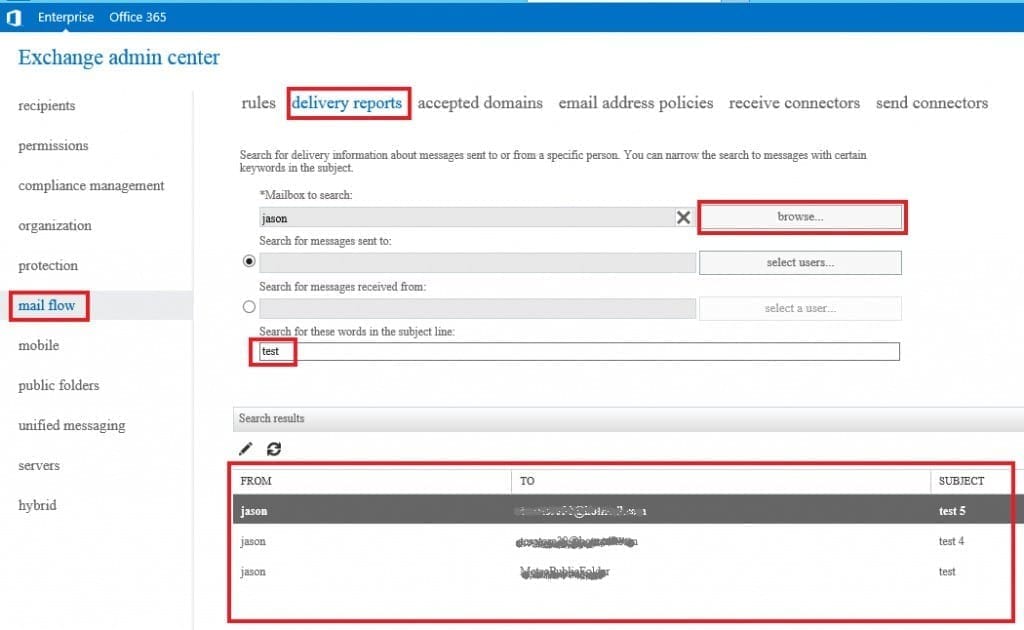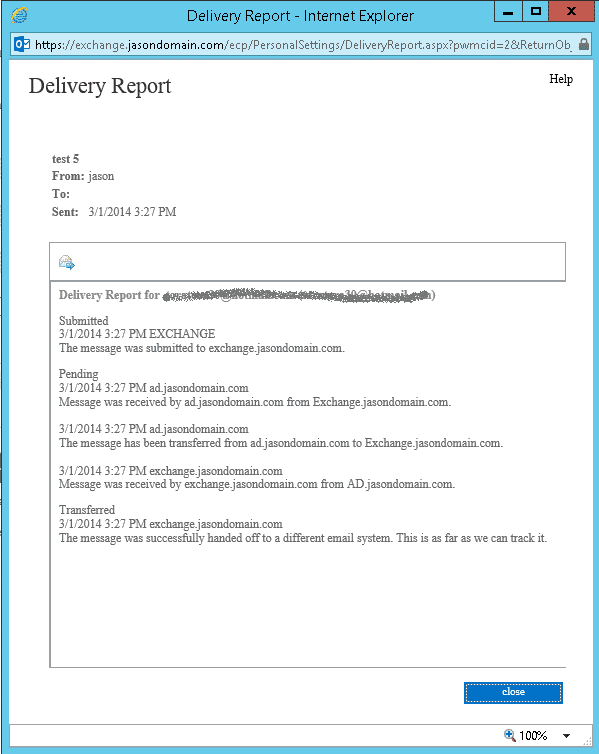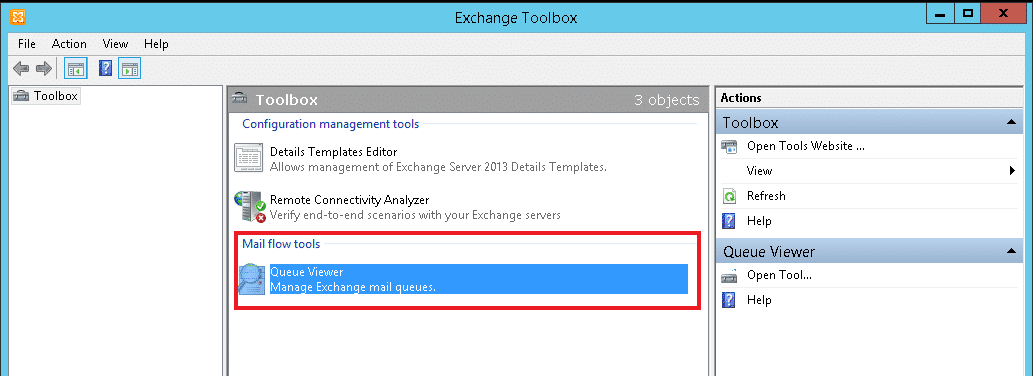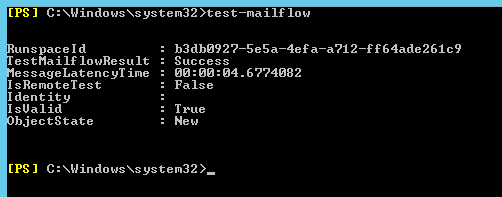In previous versions of Exchange, the troubleshooting and message tracking for delivery was painful and tedious. There was no real logging file or GUI interface where the network admin was able to interface in real time. One thing I personally like about Exchange 2013 is the way the audit logging and tracking of messages has been simplified and built right into the Exchange Admin Center (EAC). Administrators are able to search for logs with some simple search field queries as shown below. The log feature in Exchange 2013 is called “Delivery Reports” and is located under the “Mail Flow” menu of the EAC. As seen below, I am searching for a local mailbox named Jason that sent a message with the word test in the subject line and the results can be viewed below.

You also have the ability to search for a message sent to or received from specific addresses. It should be noted, however, that the search fields will only allow you to search for email accounts that are part of the local Global Address List. It does not allow the searching of email address of public domains. If you require further details, you can double click any the search results in the search result section of the Delivery Report to display detailed logging and header information for that particular message.

The Delivery Report logs are held for 14 days but can be modified need be.
Although many of the tools which were part of the toolbox on Exchange 2010 have been removed, the queue viewer still remains as part of the toolbox package. As the name indicates, it is a queue viewer which will allow you to view any backlog and see if certain domains are not available for delivery.

Another quick command you can run in the Exchange Management Shell (EMS) is the “Test-Mailflow” command. It is a tool for a quick query to test the mailbox delivery.

Although the results obtained from this test are minimal, it can confirm that the mailbox server is responding and if the test was successful or not.
In my personal opinion, the logging and search features for Exchange 2013 were well done by the Microsoft Exchange team. It is really simple and easy to use, and it provides sufficient data to determine mail flow problems and diagnose any other potential email problems. It looks like the logging features from Exchange 2010 to 2013 have greatly changed for the better. I hope in the future Microsoft will incorporate these logging features in future products and applications.
I now open the floor to you. What features of Exchange 2013 are you happy with and which one could afford to be improved in your opinions?



